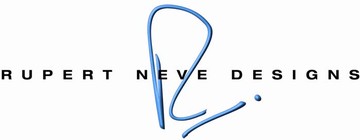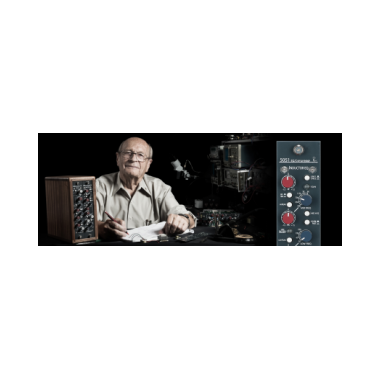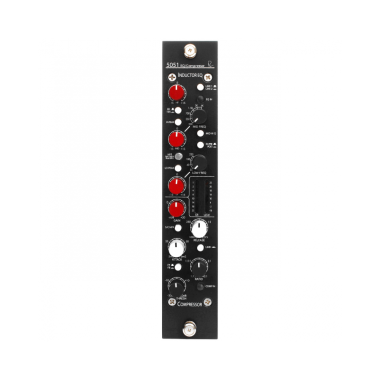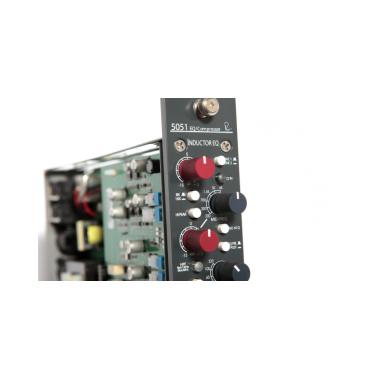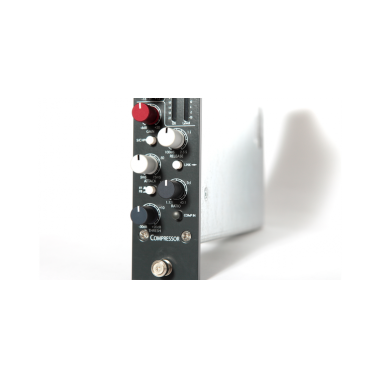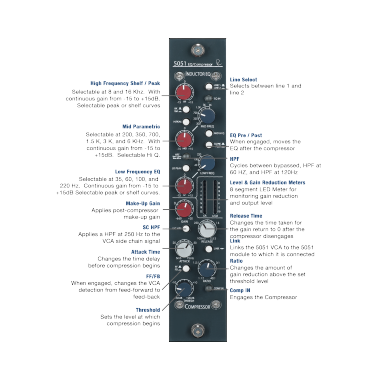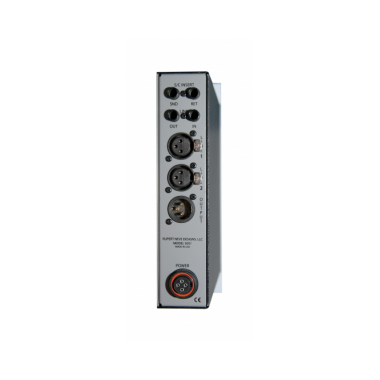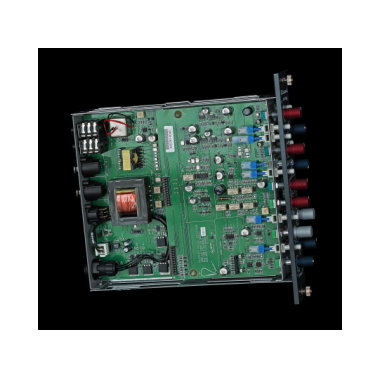- Flyline Music AG
Hauptmenü:
×
- index
-
Produkte
-
Mikrofone
-
3DIO
- Microphones
- Pro Microphones
- Accessoires
- AEA
- Antelope Audio
- Avantone Pro
- Bock Audio Design
-
Cascade Microphones
- Short Ribbons
- Long Ribbons
- Specialty Ribbons
- Accessoires
- Cloud Microphones
- Chandler Limited
- Coles Electroacoustics
- Dizengoff Audio
-
Earthworks
- Vocal Series
- PianoMic Series
- Drum Series
- SR Series
- TC Series
- QTC Series
- Periscope Series
- Measurement Series
- Accessoires
- Ear Trumpet Labs
- Granelli Audio Labs
- Josephson
- Kahayan Pro Audio
- Luke Audio
- Manley Labs
- Mojave Audio
- Placid Audio
- Roswell Pro Audio
- Royer Labs
- Sontronics
- Stager Microphones
- Townsend Labs
- Vanguard Audio Labs
- Warm Audio
-
3DIO
-
Studio Equipment
- A Designs Audio
- ACME Audio
- AEA
- AMS Neve
- Analoguetube
-
Antelope Audio
- Discrete Synergy Core Interfaces
- Discrete Interfaces
- HDX & USB Interfaces
- Thunderbolt & USB Interfaces
- Stereo Converters
- Master Clocks
- Mic Preamps
- Monitor Controller
- API
- Asparion
- Audified
- Avalon Designs
-
BAE
- Guitar Tools
- 500 Series
- Deskop Mic Preamps
- Modules & 19"
- Bettermaker
- Big Bear Audio
- Black Box
-
Black Lion Audio
-
500 Series
- Modules
- Rack
-
Outboard
- Mic Preamps
- Compressors
- Studio Clocks
-
500 Series
-
BURL Audio
- B1 500 Series Modules
- B2 Bombers
- B26 Orca
- B32 Vancouver
- B16 Mothership
- B80 Mothership
-
Chandler Limited
- Abbey Road Series
- 500 Series
- Germanium Series
- Rack Mixer
- Guitar Pedals
-
Cranborne Audio
- Outboard
- Desktop
-
500 Series
- Modules
- Racks
- Crane Song
-
Daking
- Preamplifiers
- Compressors
-
Dangerous Music
- Converters
- Controller
- Router
- Summierer
- Outboard
- Dave Hill Designs
- Dizengoff Audio
-
Drawmer
- Monitor Controller
- Sound Protection
- 60ies / 70ies Series
- MXPro Series
- Gates & Compressors
- Digital Management
- Signal Splitters
- Signal Distribution
- Power Amplifier
- Earthworks
-
Elysia
- 500 Series Modules
- 19" Outboard
-
Empirical Labs
- 500 Series
- 19" Outboard
- Plug-In
- Flock Audio
-
Fredenstein
- MixCube
- HD Reference Preamps
-
500 Series
- Artistic Modules
- F600 Modules
- Racks
- Vintage Analog Series
- Outboard Equipment
- Metering
- Grace Design
- Great River Electronics
-
Heritage Audio
- RAM Series
- Elite Series
- 500 Series
- Table Top Series
- 19" Outboard
- Classic Series
- Highland Dynamics
-
IGS Audio
- 500 Series
-
19" Outboard
- Spring Reverb
- Compressors
- Equalizers
- Preamplifier
- Interphase Audio
-
Inward Connections
- 500 Series Modules
- 19" Outboard
- JDK Audio
-
Kahayan Pro Audio
- Summing Mixers
- Amp/Speaker Selectors
- Preamplifier
-
Kush Audio
- 500 Series Modules
- 19" Outboard
-
La Chapell Audio
- 500 Series Modules
- 1/2 19" Outboard
- 19" Outboard
-
Lindell Audio
- 500 Series Modules
- 500 Series Racks
-
Lisson Grove
- 19" Outboard
- Little Labs
- Locomotive Audio
-
Looptrotter
- 500 Series Modules
- Outboard Equipment
- Modular Console
- Mäag Audio
-
Manley
- Mic Pres / Combos
- Equalizers
- Dynamics
- Maselec
-
Mercury Recording Equipment
-
500 Series
- Modules
- Racks
- Power Supplies
- Accessoires
- Vacuum Tube Outboard
- Solid State Outboard
- Custom Shop Outboard
-
500 Series
- Millennia
-
Mytek Digital
- Brooklyn Series
- Converters
- Private Q2
-
Overstayer
- 19" Outboard
- Pete's Place Audio
-
Phoenix Audio
- Desktop
- 500 Series
- 19" Outboard
- 1/2 19" Outboard
- Pultec
-
Purple Audio
- MFTwenty5 Rack Mixer
- 500 Series
- 19" Outboard
- Q2 Audio
-
Retro Instruments
- 500 Series Modules
- Portable Amplifier
- Outboard Equipment
-
Roger Schult
- 500 Series Modules
- 19" Outboard
-
Power Supplies
- Roll Music Systems
- Rupert Neve Designs
-
Serpent Audio
- 500 Series Modules
- 19" Outboard
-
Shadow Hills Industries
- 500 Series
- 19" Outbaord
-
Solid State Logic
- Audio Interfaces
- Small Format Consoles
- 500 Series
- Analogue Processors
- X-Rack System
- Digital Equipment
- Speck Electronics
-
Spectra 1964
- 19" Outboard
- Desktop
- 500 Series
- Standard Audio
-
Teegarden Audio
- DI Boxes
- Mic Preamps
-
Teknosign
- Box Line
- Preamplifier
- Summing Mixers
- Power Conditioner
- Patchbays/Adapters
- Thermionic Culture
-
TK Audio
- 500 Series Modules
- 19" Outboard
- Tonelux
- Tube Tech
- UK Sound by BAE
-
Universal Audio
- UAD-2 Live Rack
- OX The Amp Top Box
- Audio Interfaces
- UAD-2 Accelerators
- Analog Hardware
- Useful Arts Audio
- Vertigo Sound
- Warm Audio
- Wave Distro
- Weight Tank
- WesAudio
- Whitestone Audio
-
Monitoring
- Auratone
- Avantone Pro
-
Aviom
- FUGU Speakers
- Livemix
- Unity Audio
-
Electronic Sound
-
Mode Machines
- 19" Equipment
- Desktop
- MIDI Tools
- Pedals
- Sequential
-
Studio Electronics
- Boomstar Modular Synthesizers
- Boomstar Modular Eurorack
- Boomstar Desktop Synthesizers
- 19" Analog Synthesizers
-
Vermona
- Modular Module
- Synthesizer
- Drums & Percussion
- Effektgeräte
-
WMD
- Effect Pedals
-
Eurorack Modules
- Aperture
- Arpitecht
- Arpitecht Triad
- Buffered Multiple
- Chimera
- Compressor
- DVCA
- Fracture
- Geiger Counter
- Invert Offset
- Metron
- Micro Hadron Collider
- MSCL
- MM Envelope
- MM Extension
- MM VCA
- Overseer
- Performance Mixer
- PM Mutes Expander
- PM Channels
- PDO MKII
- PDO Triple Bipolar VCA
- Pro Output
- QAAF
- SSM
- SSM Expand
- Synchrodyne
- Synchrodyne Expand
- TRSHMSTR
-
WMD / SSF Collaboration
- Monolith Synthesizer
- Eurorack Modules
-
Mode Machines
-
Accessoires
-
ATR
- MDS-36 Tapes
- Precision Analog Master Tapes
-
Bittree
- Dante Patchbays
- TT Patchbays
- XLR / Jack Patchbays
- TT Patch Cables
- Accessoires
- Cloud Microphones
-
Latch Lake
- micKing®
- Xtra Booms
- iOxbooms
- Parts
-
Pete's Place Audio
- Pan 60
- Recording The Masters
- Scott Liebers
-
Sterling Modular
-
Multistation
-
Plan Consoles
- Racking Systems
-
Multistation
-
Teknosign
- Power Conditioner
- Patchbays/Adapters
-
Vovox
- sonorus
- link
- initio / textura
- sonorus XL
-
Zaor Studio Furniture
-
ATR
-
Mikrofone
- News
- Preislisten
- Links
- Kontakt
Produkte > Studio Equipment > Rupert Neve Designs > Shelford Modules
Features
Technische Daten
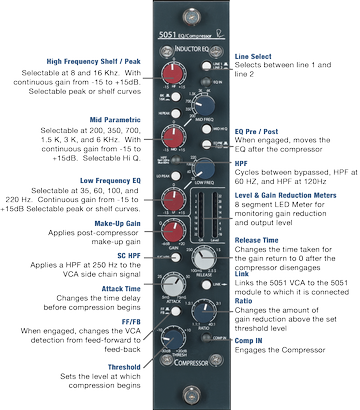
Modelle / Preise
Zubehör
Hersteller
5051
Shelford Equalizer & Compressor Module
- Shelford Equalizer und Kompressor Modul
- 3 Band Induktor Equalizer
- High und Low Band Shelf/Peak wählbar
- Parametrisches Mittenband mit Hi-Q
- 60/120 Hz Highpass Filter
- Low Noise, Low Distortion VCA Kompressor
- Feed Forward- oder Feedback-Mode
- Makeup Gain bis +20dB
- Sep. Sidechain Highpass Filter bei 250 Hz
- Sidechain Insert & Return, Stereolink
- Variable Attack, Release, Threshold und Ratio
- Input und Output Transformatoren
- 2 Line Inputs XLR
- Externe Stromversorgung für 5 oder 25 Module
The 5051 combines a classic three band EQ based on Rupert’s vintage designs with the power and flexibility of the Portico II compressor. Utilizing a fully-discrete, class-A signal path and high performance input and output transformers, the 5051 delivers the performance and musicality expected from a Rupert Neve Design.
The Equalizer
The EQ design on the 5051 evokes sonic similarities with some of Rupert’s classic EQs. The 5051 uses a custom tapped inductor with selected capacitors to form the mid range equalizer band, and the shelf curves are based on Rupert’s vintage modules, including very similar frequency choices. Each EQ section also uses low feedback class-A discrete electronics to prevent low level artifacts and harshness from detracting from the tonal shaping. The EQ, however, is a modern design with advantages offered by techniques that were not possible 35 years ago along with improvements in electronic components currently available, and should not be considered a clone. Let’s just say it has heritage.
Both the High and Low Band can be switched from Shelf to Peak curves and offer 15 dB of boost or cut. The High can be switched from 8 kHz to 16 kHz and the Low Band selected at 35 Hz, 60 Hz, 100 Hz or 220 Hz. The inductor based Mid Band offers 6 center frequencies; 200 Hz, 350 Hz, 700 Hz, 1.5 kHz, 3 kHz and 6 kHz. The Mid Band also has a High Peak switch to narrow the bandwidth or increase the Q of the filter. The 5051 includes an 18 dB/octave High Pass Filter with two corner frequencies on a lit button that toggles through "OFF, 60 Hz then 120 Hz indicated by a blue or red LED respectively.
Additionally, the EQ can be switched Pre or Post the compressor. Normally the EQ precedes the compressor but the order can be selected so that the EQ follows after the Compressor. The 5051 also has two XLR balanced inputs that can be switched from the front panel. This allows the user, for example, to have a mic preamplifier and line input from a DAW to be pre-patched and easily selectable.
The Compressor
The 5051 Compressor also features a discrete class A signal path proven used in the Portico Series, with individually controllable threshold, attack, release, makeup gain, ratio, side chain HPF, Feed-Forward / Feed-back selection and Peak/RMS detection modes. With the compressor inactive, the 5051 may be used as a transformer-coupled, high-performance line amplifier, and two 5051’s may be linked for stereo operation as well.
How the Compressor Works
In order to control gain, a V.C.A. or Voltage Controlled Amplifier (or Attenuator) is used. There are many types of V.C. including the use of tubes, discrete and integrated solid state circuits and naturally non-linear devices, each one having its characteristic behavior that reflects sonically on the final performance, and gives it a character or signature that can be musically attractive or not! The Portico 5051 compressor makes use of a very accurate, low noise, low distortion V.C.A. having, essentially, no signature of its own.
A part of the audio signal is rectified and smoothed to produce a suitable control voltage for the V.C.A. which has to respond very quickly and have low distortion. If the response is too fast, low frequency signals will themselves, be gain controlled! If the response is too slow, the signal will overshoot and the first few cycles will not get compressed. The speed and accuracy of the response, known as the "attack", and the time frame that gain remains under the initial control, known as "release" or "recovery" and plays a large part in the way a compressor sounds.
Feed-Forward or Feed-Back?
The 5051 also has the ability to switch between feed-forward and feed-back modes. If the V.C.A. Control voltage is taken from the 5051 output, (i.e. after the V.C.A.) it cannot act immediately on the V.C.A. because it has already been modified by settings of the V.C.A. and circuits through which it has passed. This is known as a "Feed-Back" compressor. The two compression characteristics are quite different; there is more "Overshoot" and both the attack and recovery ramps are changed, providing the user with powerful choices.
In most of Mr. Rupert Neve earliest designs, feed-back detection controlling the VCA with a rectified voltage from the unit output was intrinsic to the musical dynamic response. However, the very nature of a feedback compressor limits the attack time of the compression circuit. To offer faster, more technically accurate response times, feed-forward detection was implemented on Mr. Rupert Neve’s more modern designs. With the FF / FB switch, both classic and modern VCA responses are available.
Ratio and Threshold
Above a given "THRESHOLD" signals are reduced by an adjustable amount ranging from 1:1, (which is linear, or no reduction at all), to more than 40:1 which is a very high ratio, equivalent to that of a Limiter. RATIO is sometimes referred to as "Slope" because when depicted on a graph, the slope of the graph representing Output versus Input, is what changes.
Ratio and Threshold are closely inter-dependent. If a RATIO as high as 40:1 has been set, then if the THRESHOLD is set at 0 dBu, even when a massive signal of +40 dBu (unlikely!) is presented to the input, the output signal will only be +1 dBu. RATIOS as high as this would normally be set somewhere above 0 dBu – say at +14 dBu, in order to prevent the output signal level exceeding just over +14 dBu to protect, for example, a digital recorder. Similarly, if a RATIO of 5:1 has been set, an input signal which is 10dB above THRESHOLD will only rise by 2dB above that THRESHOLD at the output.
THRESHOLD control covers the Range from below -30dB to +22dBu. When THRESHOLD set at a low level, with a fairly high RATIO the amount of gain reduction will be considerable and it may be necessary to use some GAIN after the compressor to restore the apparent signal level.
Attack Time
The ATTACK time is the time taken for the compression circuits to start compressing. A long ATTACK time allows short duration peaks to "escape" and go through uncompressed. This may cause overload on subsequent digital circuits. A very short attack time sounds un-natural and robs the signal of "life" by removing transients. Some transients are extremely fast and have little effect on the sound quality. Setting a long attack time often means that almost no gain reduction occurs because the transient is history (!) before compression has had time to operate. However, even the fastest circuits take time to operate which means that there is always some "Overshoot". Small amounts of "Overshoot" are musically desirable – there are exceptions, of course.
Setting the right values of RELEASE and ATTACK is what compression is all about! Once the principles are understood a Compressor-Limiter such as the 5051 provides a powerful tool that actually appears to enhance the dynamic range of a recording and so provide greater musical enjoyment.
Release / Recovery
The notes above explain how the 5051 handles signals of constant amplitude such as pure tones. Real program signals, however, are continually changing in level. The way in which a compressor deals with actual program material depends upon the magnitude and duration of peaks in the program level.
If the RELEASE TIME is set to be very short, a short duration signal will be compressed but the gain will return to normal very quickly, giving a fluctuating and un-natural sound known as "Pumping" when the background, or other signals, are forced up and down. The gain will also tend to follow the wave form of low frequency signals. RELEASE TIME should be set long enough for the gain to remain reasonably constant between each bass note or between speech syllables.
The Power Supply
The 5051 is intended for 5088 consoles or 5285 vertical frames. There are two +/- 24V power supply options; The 5-way supply is designed to sit in the bottom of a rack, and the 25-way supply is a 2U enclosure. The external +/- 24V supply provides exceptionally clean power, and reduces heat build-up within modules associated with DC-DC up-conversion.
5051
Shelford Equalizer & Compressor Module
Frequency Response:
Main Output, no load, –3 dB @ 2.5 Hz
–3 dB @ 125 kHz
Noise:
Measured at Main Output, unweighted, 22Hz-22kHz, Terminated 40 Ohms, With gain at unity: better than –102 dBu
Maximum input:
from 20 Hz to 20 kHz, +25 dBu.
Maximum output:
from 20 Hz to 20 kHz is +25 dBu.
Total Harmonic Distortion and Noise:
From <10 Hz to 80 kHz, @ 1kHz, +20 dBu output: Better than 0.002% @ 20Hz, +20 dBu out Better than 0.120%
@ 20kHz, +20 dBu out Better than 0.010%
Maximum input:
from 20 Hz to 20 kH, +24.5 dBu
Maximum output:
from 20 Hz to 20 kHz, +24.5 dBu
Total Harmonic Distortion and Noise:
from <10 Hz to 80 kHz, @ 1kHz, +20 dBu output: Better than 0.007% @ 20Hz, +20 dBu out Better than 0.120% @ 20kHz, +20 dBu out Better than 0.070%
The Compressor
(Threshold at +20 dB, Ratio at 1.1:1, Gain at 0)
Noise:
Measured at Main Output, unweighted, 22Hz-22kHz, Terminated 40 Ohms.
Better than –92 dBu
Maximum input:
from 20 Hz to 20 kHz, +25 dBu.
Maximum output:
from 20 Hz to 20 kHz, +25 dBu.
Total Harmonic Distortion and Noise:
from <10 Hz to 80 kHz @ 1kHz, +20 dBu output: Better than 0.020% @ 20Hz, +20 dBu output Better than 0.140% @ 20kHz, +20 dBu output Better than 0.070%
Power Supplies
5-Way Power Supply
25-Way Power Supply (2U)

5051
Shelford Equalizer & Compressor Module
5225: 2 Slot Vertical Rack mit Holzrahmen
5295: 9 Slot Vertical Rack aus Stahl, 19" 5U
: Externe Stromversorgung für 5 Module
: Externe Stromversorgung für 25 Module, 19" 2U
Vovox 6.3302: sonorus direct S Mikrofonkabel 3.5m
Vovox 6.3202: sonorus protect A Instrumentenkabel 3.5m
Rupert Neve Designs
Wimberley TX, USA
As one of the foremost pioneers in recording technology, the sound of Mr. Rupert Neve’s designs have guided the lathe of countless records in almost every conceivable genre. With 80+ years of design experience, Rupert’s story spans the globe; from growing up in Argentina before WWII, to creating the first "modern" recording consoles in England, to elevating analogue circuit design for the digital world in Texas.
Copyright 2017. All rights reserved.

